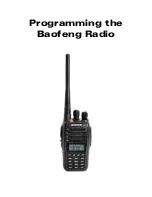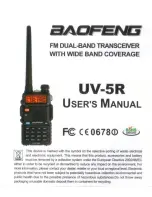
108
FAQ
13
Symptom
Cause
Remedy
This unit cannot be
selected from the Spotify
application.
—
An Internet connection is required for both the mobile
digital device and this unit.
Connect the mobile digital device by Wi-Fi to the wireless
LAN router of the same network as the one to which this
unit is connected.
A Spotify Premium account (for a charge) must be regis-
tered on the Spotify application.
When this unit is in standby, it cannot be selected from the
Spotify application.
The sound of the Spotify
audio stream is not pro-
duced.
—
Check whether this unit is selected on the Spotify applica-
tion.
Check that contents are playing on the Spotify application.
If the above does not solve the problem, turn this unit’s
power off then back on.
With an AV receiver that has
the ‘
Network, Bluetooth
’
d
‘
Network Option
’
d
‘
Play ZONE Setup
’ option, the sound
may be playing in another zone.
If this is the case, set which zone the sound is to be played
in at the play zone settings.
This unit’s volume does not
increase when the volume
slider in the Spotify applica-
tion is raised.
A volume upper limit is provided so
that the volume will not inadvertently
go up too much.
To further increase the volume, use the remote control.
When the iControlAV5 or built-in AVNavigator application
is being used, you can use the application to increase the
volume.
Playback continues on
this unit when the Spotify
application is quit.
The Spotify audio stream continues
from this unit, even when the Spotify
application is quit.
To operate again, relaunch the Spotify application.
The main power cannot be
turned on with iControlAV5
and the like during network
standby.
When network communication
is disconnected during network
standby, the device switches to nor-
mal standby mode to reduce power
consumption during standby.
Turn the main power on with the button on the remote
control or main device.
When DMR mode or Air-
Play is used from a com-
puter, smartphone, etc., the
sound is played in subzone.
Play ZONE Setup
is not set to
MAIN
.
Change
Play ZONE Setup
to
MAIN
(
page 47
).
Wireless LAN
Symptoms
Causes
Remedies
Network cannot be
accessed via wireless LAN.
SSID uses double-byte characters
such as in the Japanese language.
This receiver is compatible only with single-byte alphanu-
merical characters and some symbols such as the under-
bar. If characters other than these are used, change the
SSID before executing network settings. Refer to the user’s
manual for your router for information on SSID.
There is distance or obstacles
between this receiver and equipment
including the wireless LAN router.
Improve the wireless LAN environment such as making the
distance between this receiver and equipment including
wireless LAN router closer.
There is a microwave oven or other
device generating electromagnetic
waves near the wireless LAN envi-
ronment.
Use the system in a place away from microwave ovens or
others device generating electromagnetic waves.
Avoid using devices generating electromagnetic waves as
much as possible when using the system with the wireless
LAN.
Multiple devices are connected to
the wireless LAN router.
When connecting multiple devices to the wireless LAN
router, the IP address of the connected devices must be
changed.
The wireless LAN connection set-
tings of this receiver and equipment
such as wireless LAN router is not
correct.
When wireless LAN connections for this receiver and wire-
less LAN router are not setup, the connection between this
receiver and equipment such as the wireless LAN router
must be set.
The IP address settings of this
receiver do not match the settings of
the wireless LAN router and the like.
Check the IP address settings (including DHCP settings)
of this receiver.
If the receiver’s DHCP setting is “ON”, turn the receiver’s
power off, then turn the power back on.
Check that the IP address for this receiver matches the
settings of the wireless LAN router.
If the receiver’s DHCP setting is “OFF”, set an IP address
matching the network of the base unit (wireless LAN
router, etc.).
For example, if the wireless LAN router’s IP address
is “192.168.1.1”, set the receiver’s IP address to
“192.168.1.XXX” (*1), the subnet mask to “255.255.255.0”,
the gateway and DNS to “192.168.1.1”.
(*1) Set the “XXX” in “192.168.1.XXX” to a number between
2 and 248 that is not assigned to other devices.
The access point is set to conceal
the SSID.
In this case, it may not be shown in the access point list
screen. If it is not shown, set the SSID etc. of this receiver.
The access point’s security settings
use WEP 152-bit length code key or
shared key authentication.
The receiver does not support WEP 152-bit length code key
or shared key authentication.
There is a possibility that the chan-
nel used by the wireless network is
a wireless channel that cannot be
used with this receiver.
Change the wireless network channel to a wireless channel
that can be used with this receiver, then check the con-
nection.
Wireless Direct is not
connected when the main
power of this receiver is
turned off once and turned
on again.
The
Security Protocol
is set to
None
.
Because there are security risks, settings are necessary to
connect to Wireless Direct again. Set
Security Protocol
of
Wireless Direct
to
WEP
(
page 45
).
















































